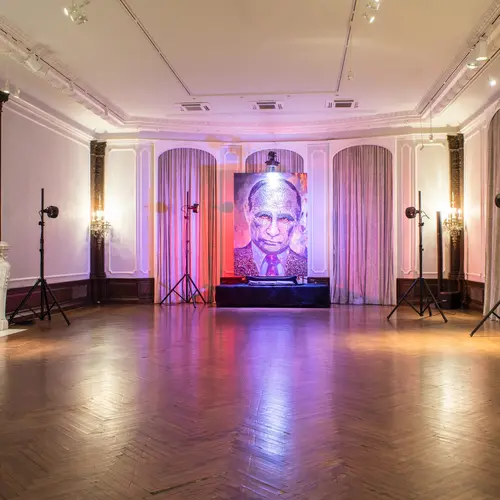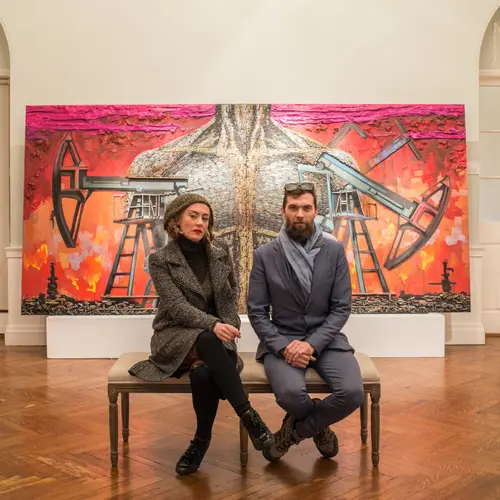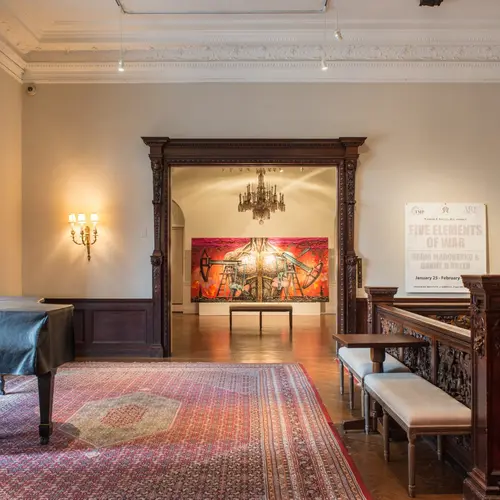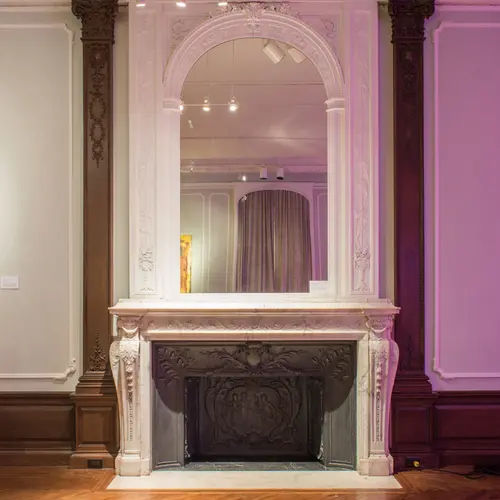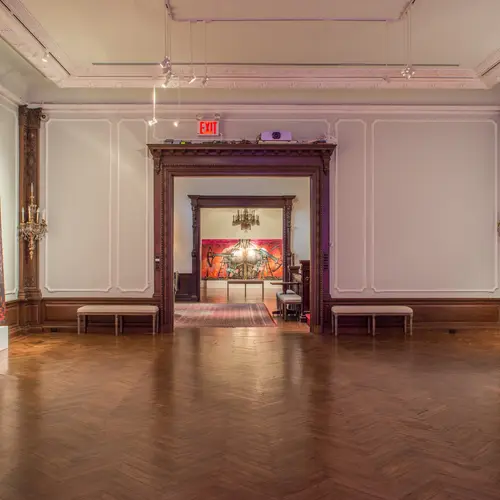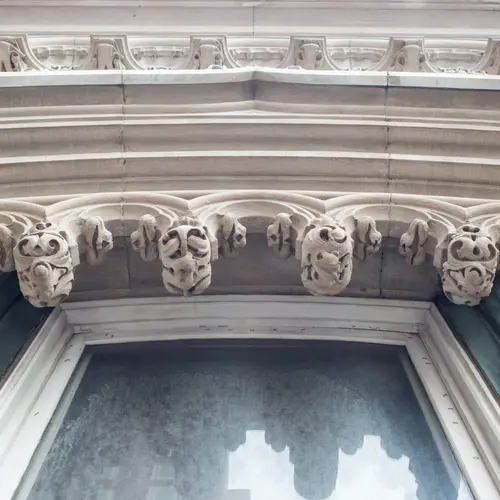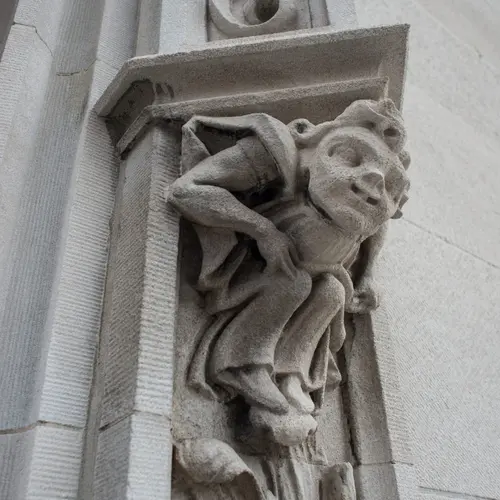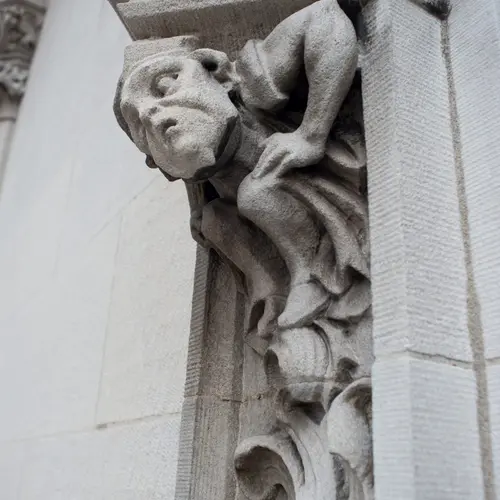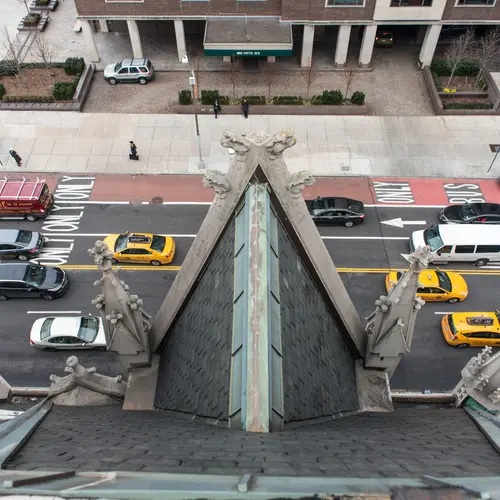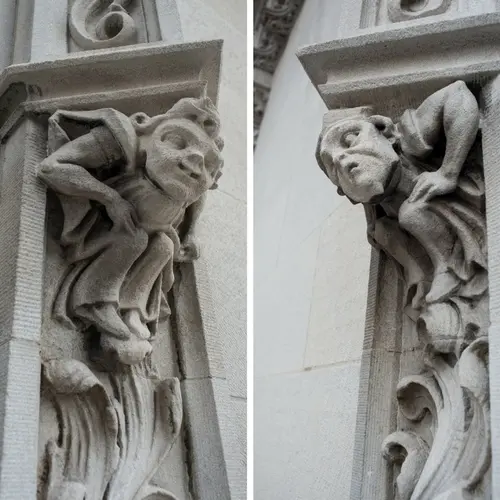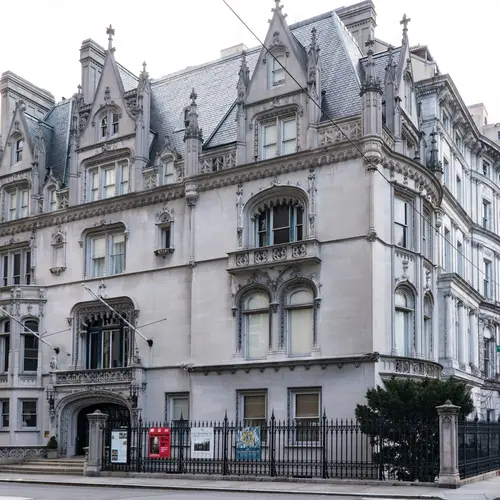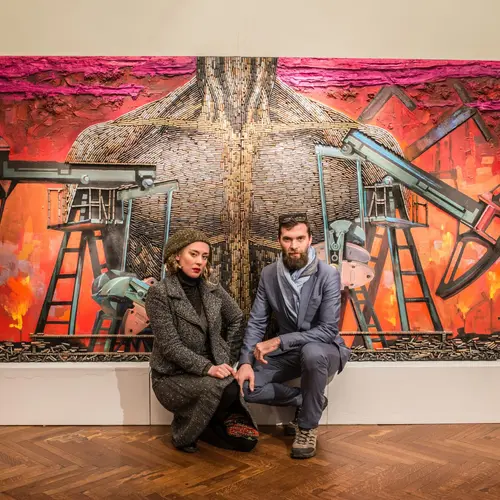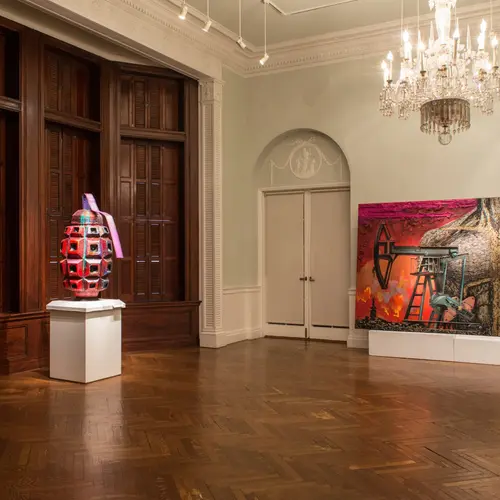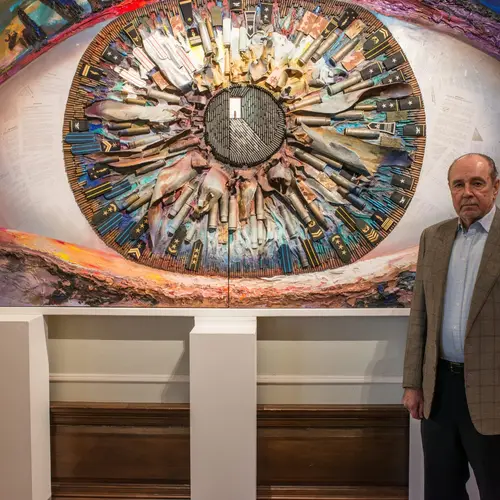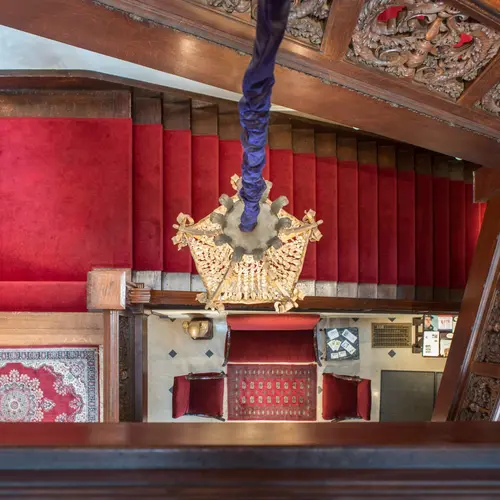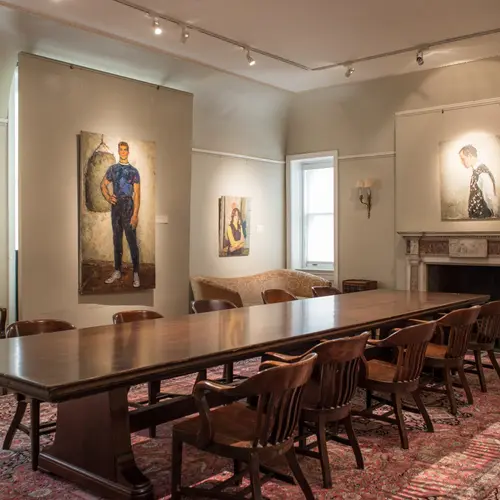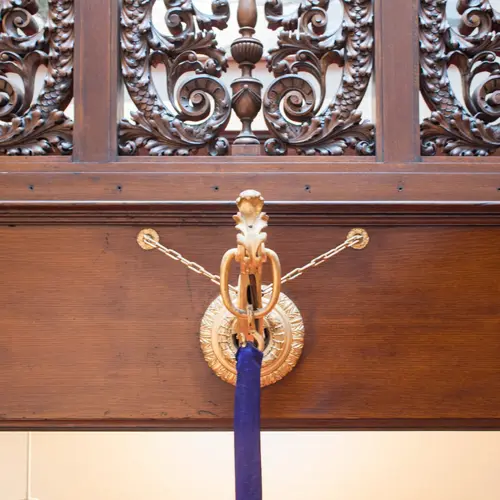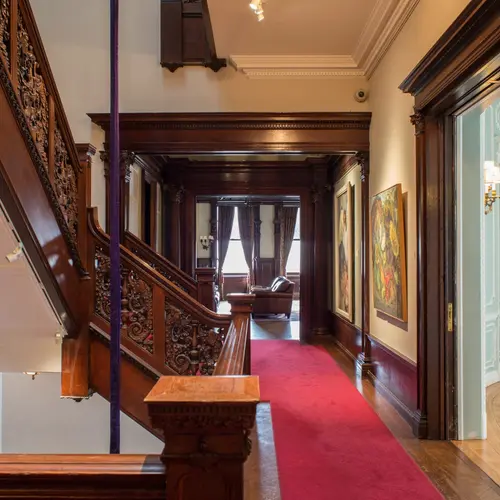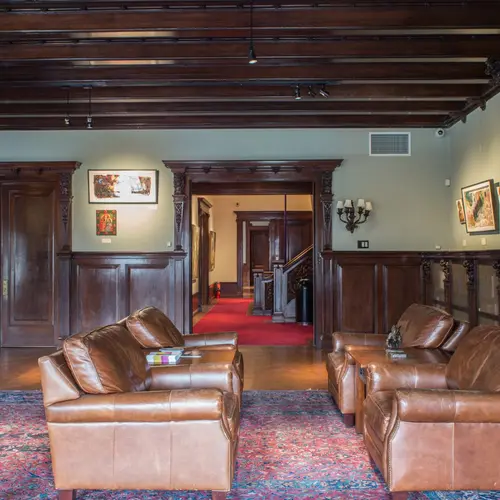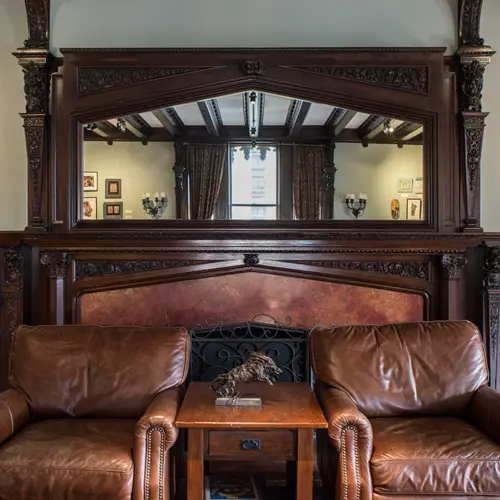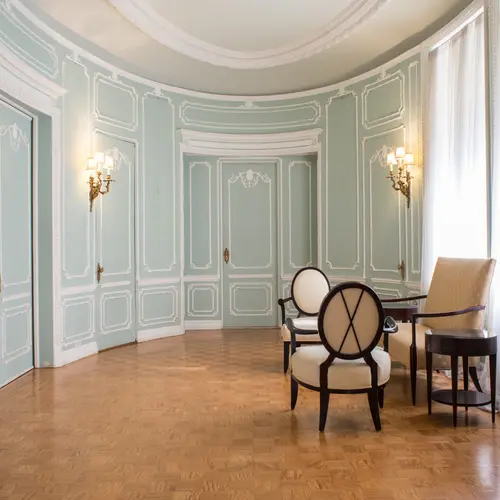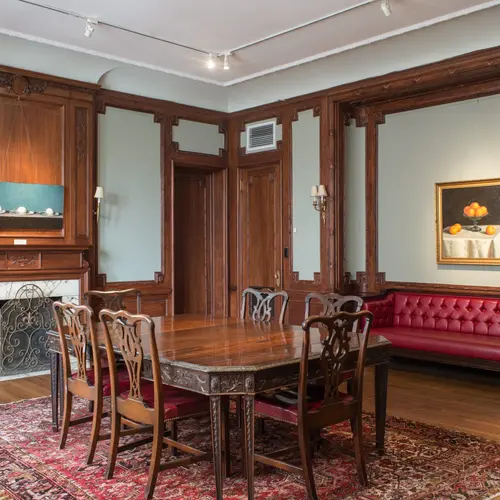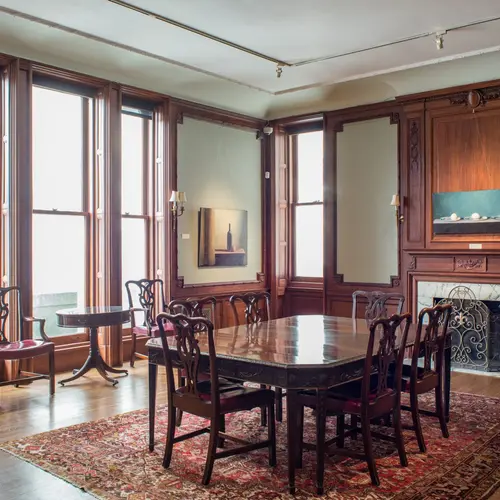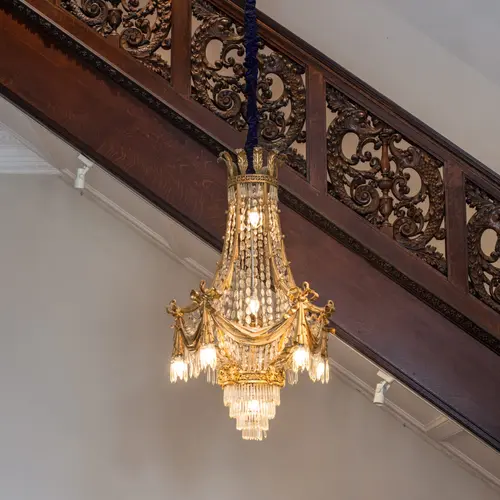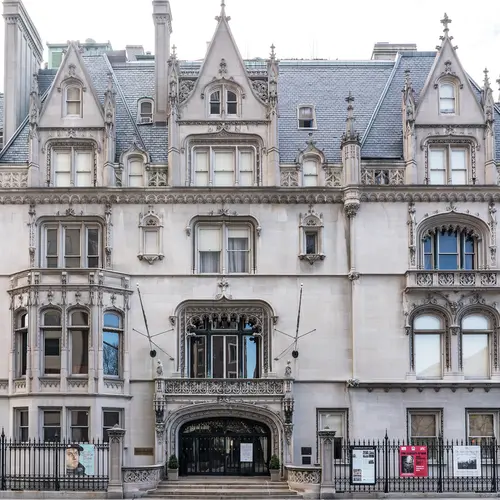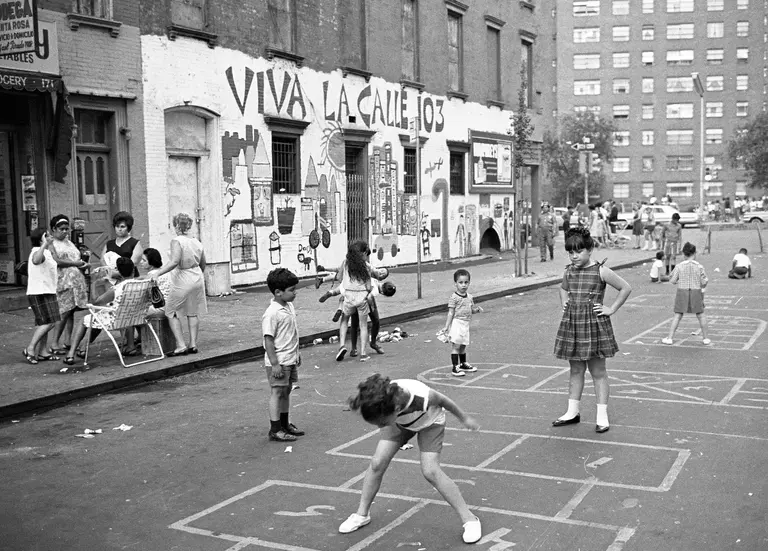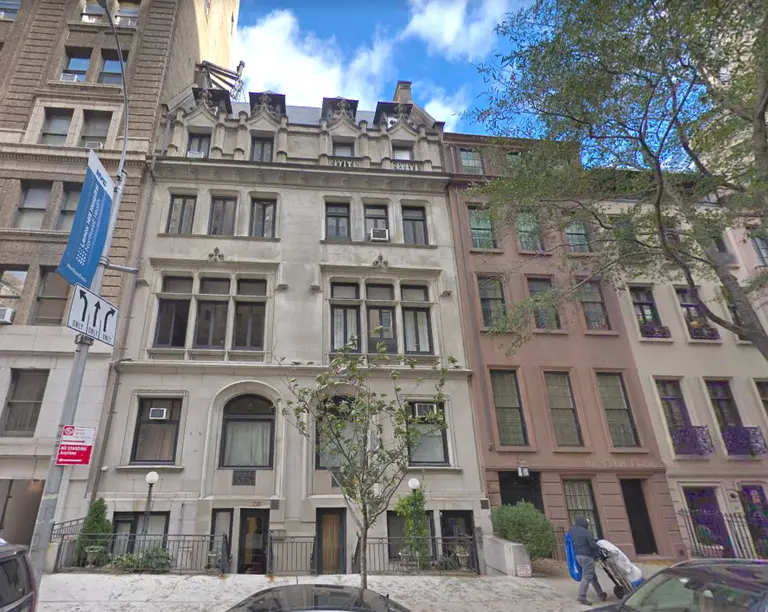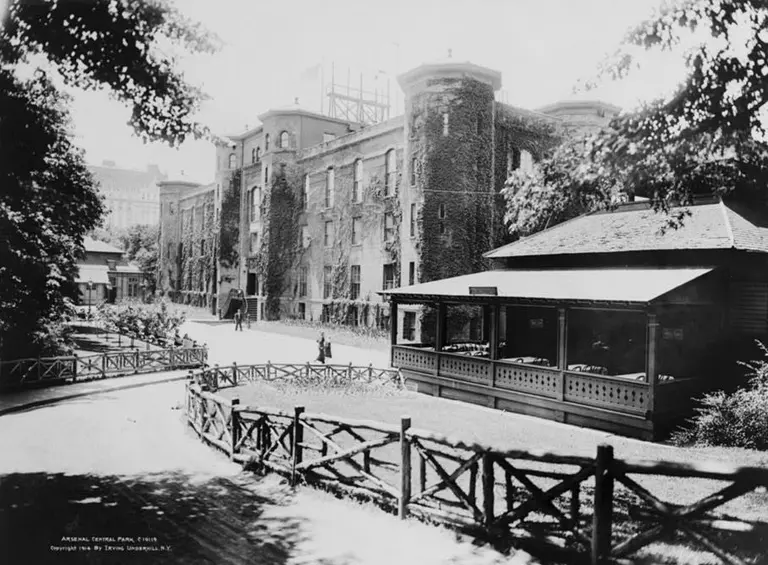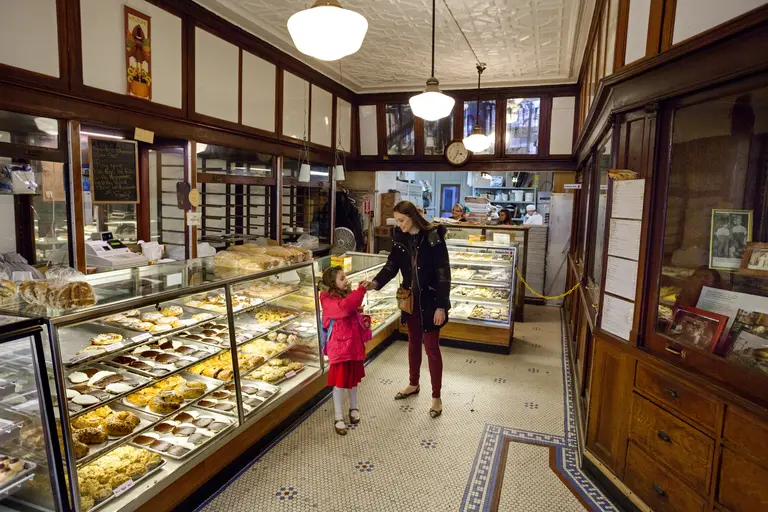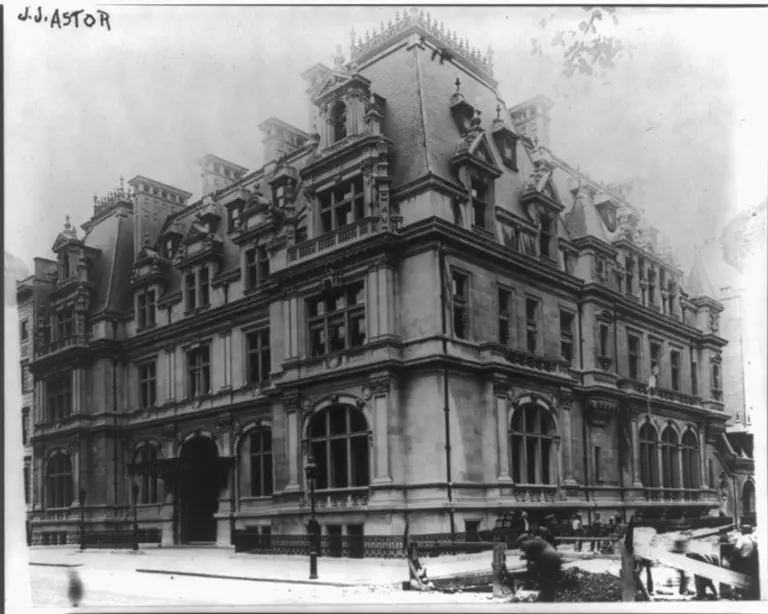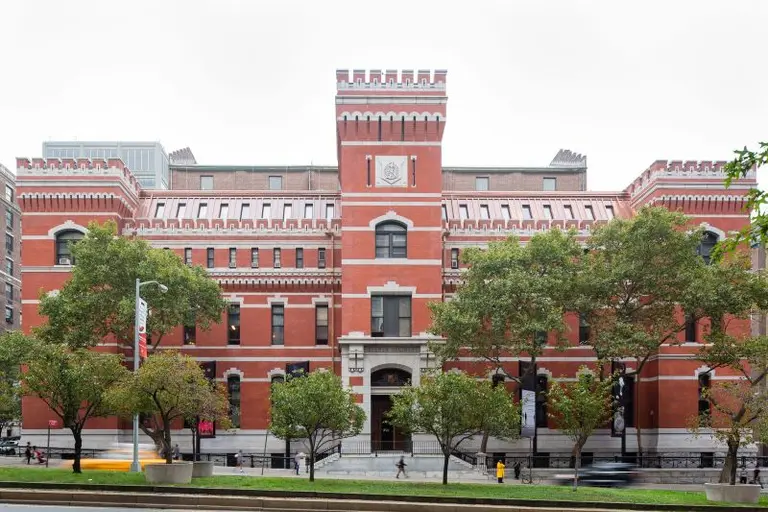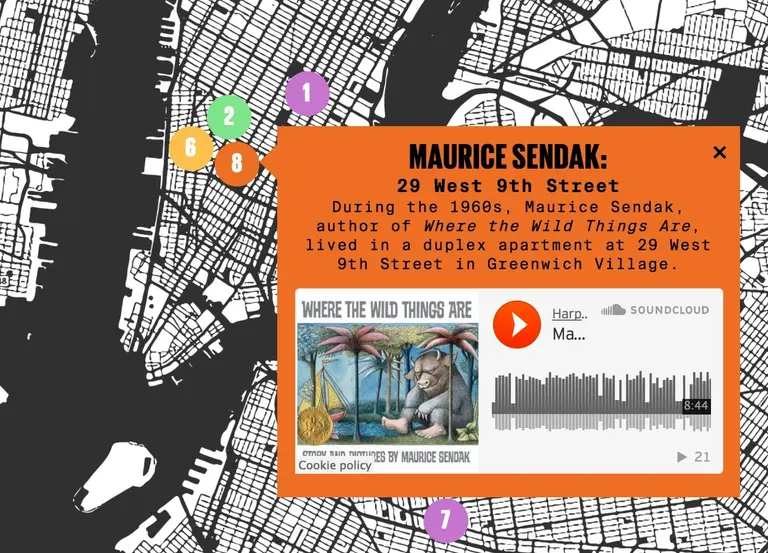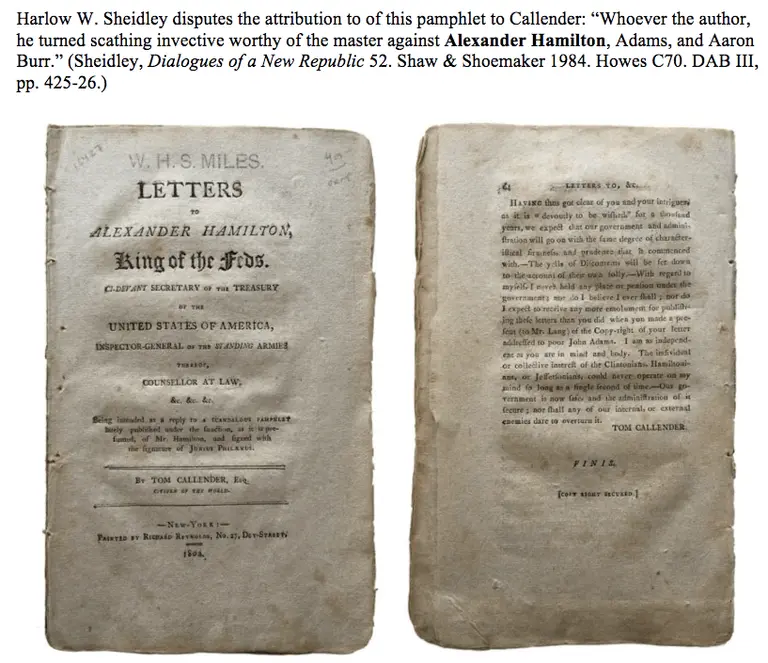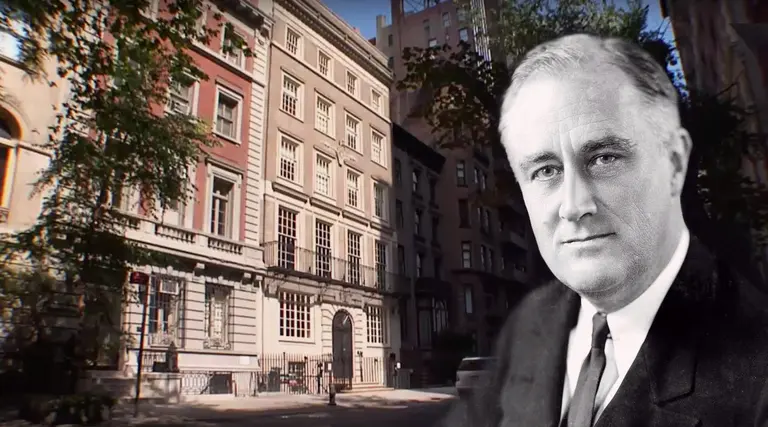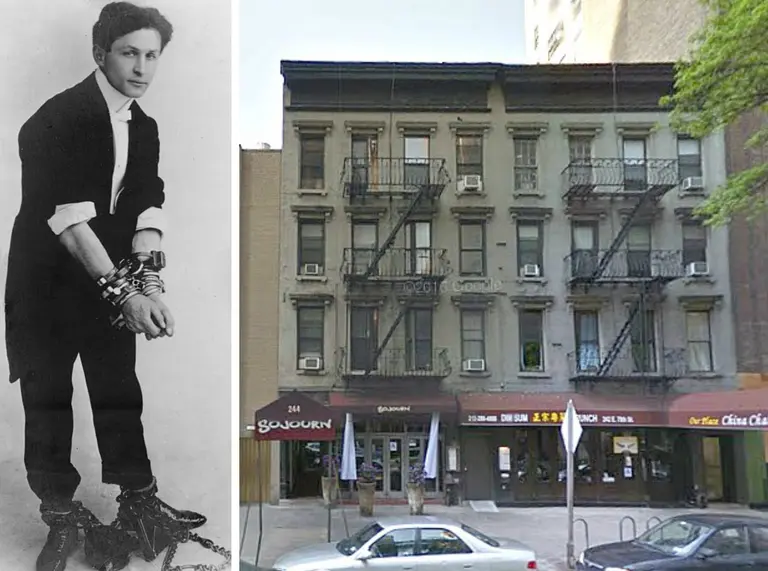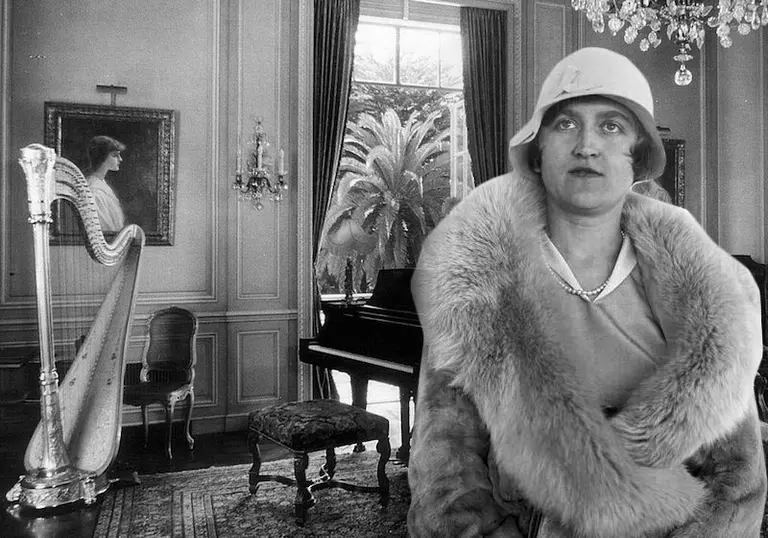Inside the Ukrainian Institute of America, one of NYC’s best hidden architectural gems
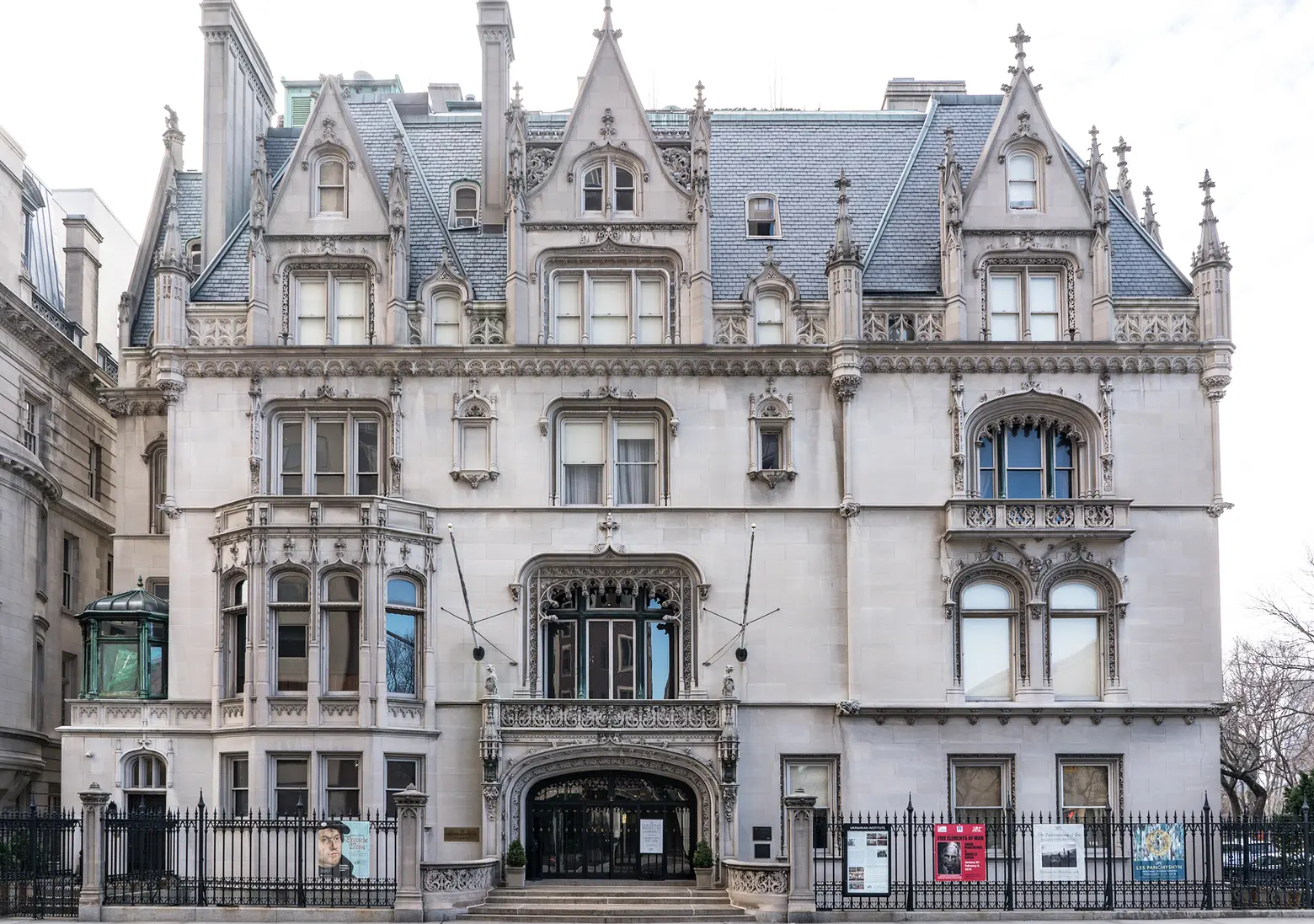
Located on East 79th Street at the corner of Fifth Avenue and across from Central Park, sits one of New York City’s last turn-of-the-century, French-Gothic styled-structures. Designed by Gilded-Age architect Charles Pierrepont Henry Gilbert, the building was home to Isaac D. Fletcher and Harry F. Sinclair, giving it the fitting name of the Fletcher-Sinclair Mansion. Now, the mansion is occupied by the Ukrainian Institute of America, a nonprofit organization that has promoted Ukrainian art, music and literature since 1948. Ahead, join 6sqft on a tour of the landmarked building and check out some of the unique features within this hidden-in-plain sight New York City architectural gem.
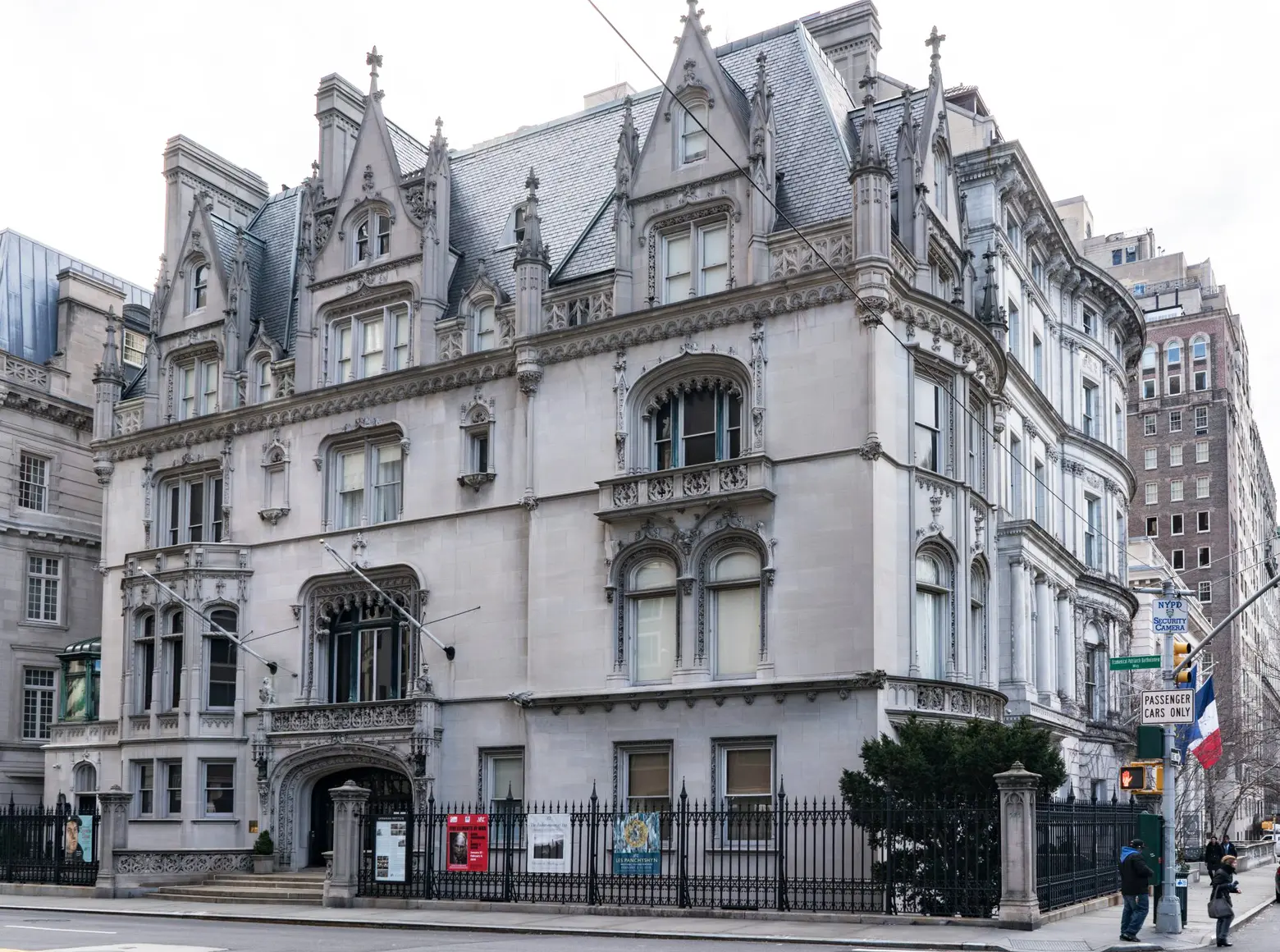
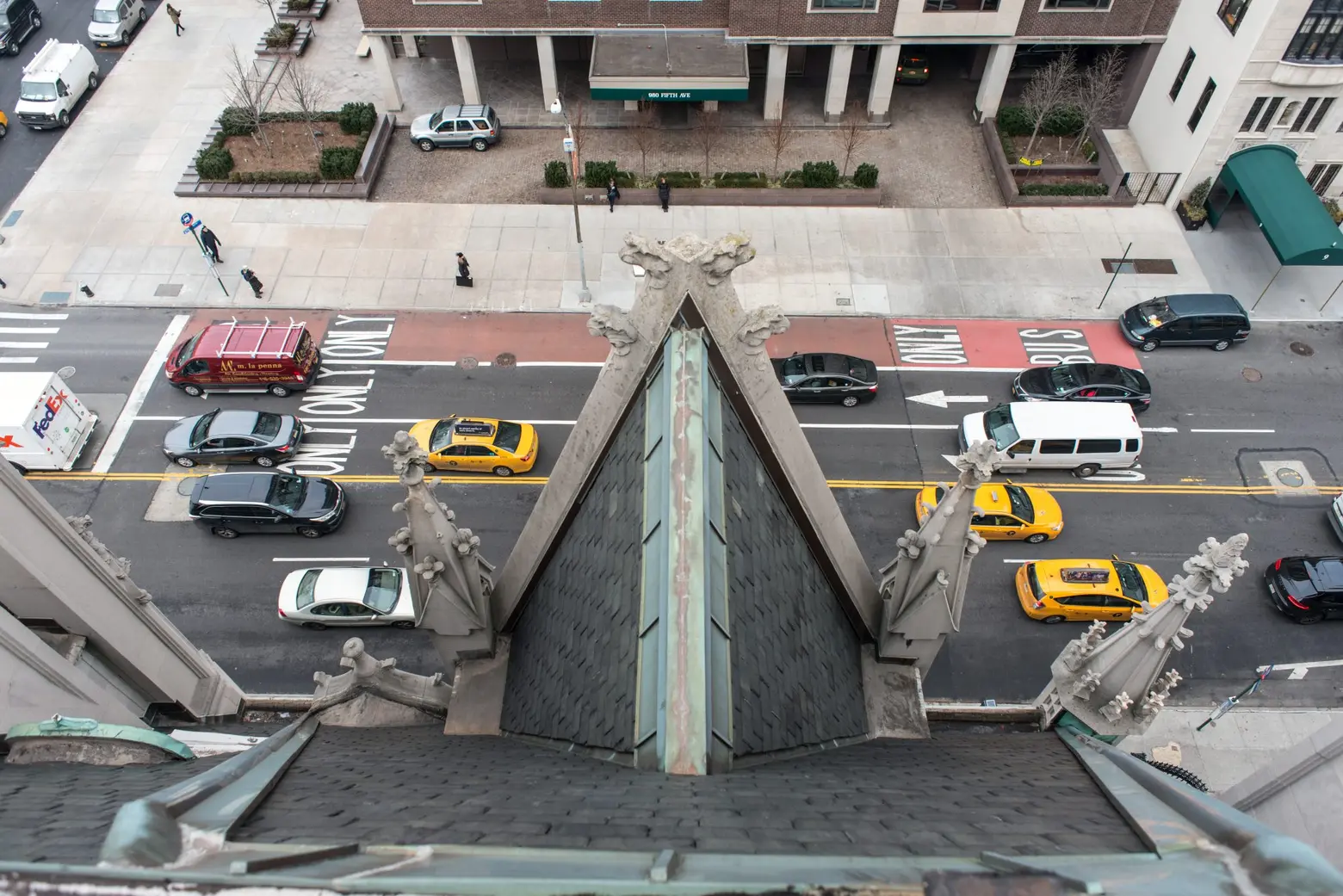
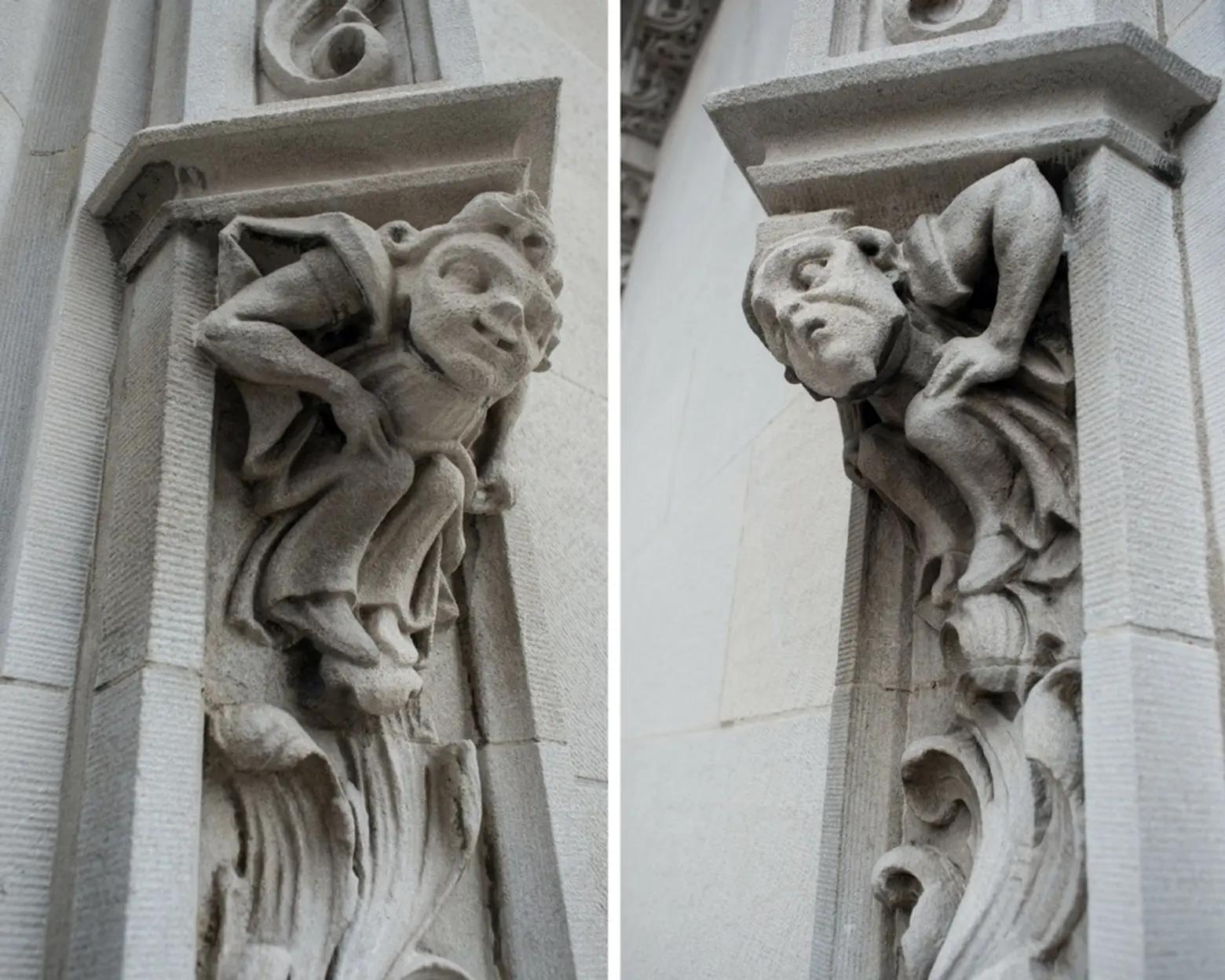
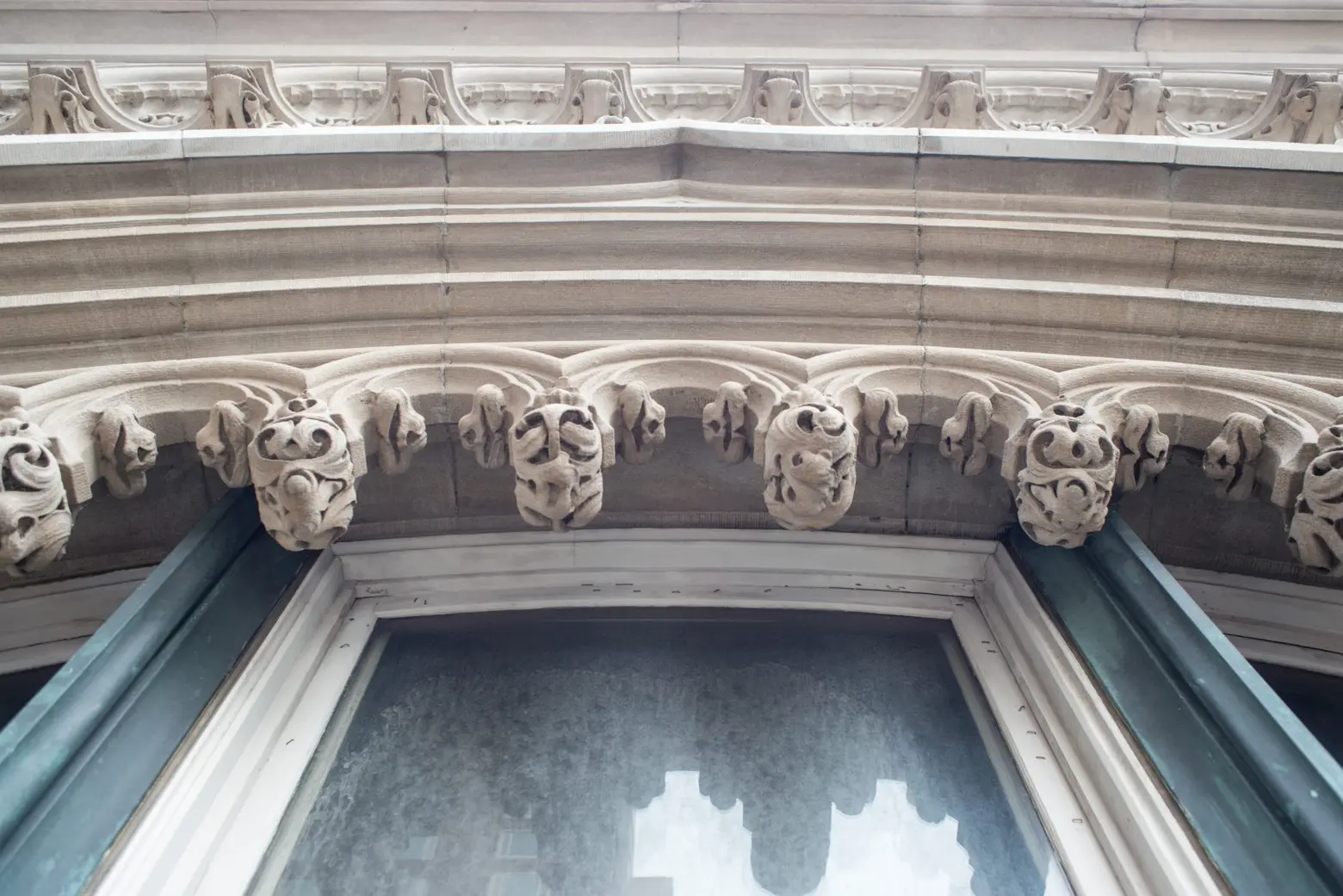
In 1898, banker Isaac Fletcher commissioned C. P.H. Gilbert to build a house modeled after William K. Vanderbilt’s neo-Loire Valley chateau. Completed in 1899, the Gothic drip moldings, gargoyles, huge entryway and limestone pinnacles of the mansion highlight the elegant, turn-of-the-century design. Ornamentations include a winged monster on the chimney, dolphins on the entrance railings and heads on the second-floor windows.
Self-made millionaire Harry Ford Sinclair bought the mansion in 1918 from the Metropolitan Museum of Art, of which Fletcher had left his house and art collection. Two years prior, Sinclair founded the Sinclair Oil Corporation, becoming the country’s largest independent oil company.
But a few years later, while living at the home, Sinclair was implicated in the Teapot Dome scandal after he was found giving bribes to Secretary of the Interior Albert B. Fall for an oil lease on government-owned land in Wyoming. After a judge found he had hired a detective agency to follow every jury member ahead of his trial, Sinclair served six months in prison for jury tampering.
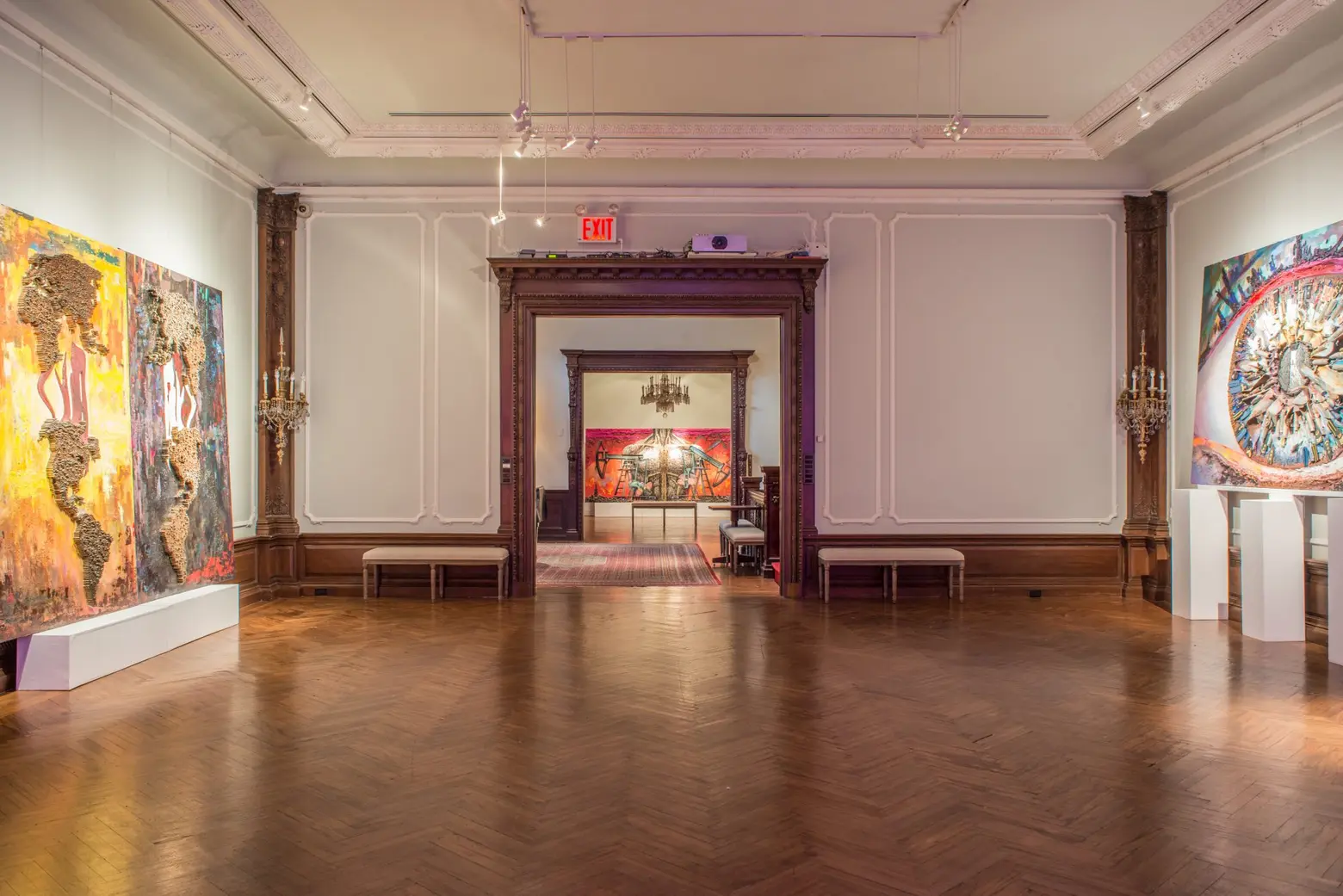
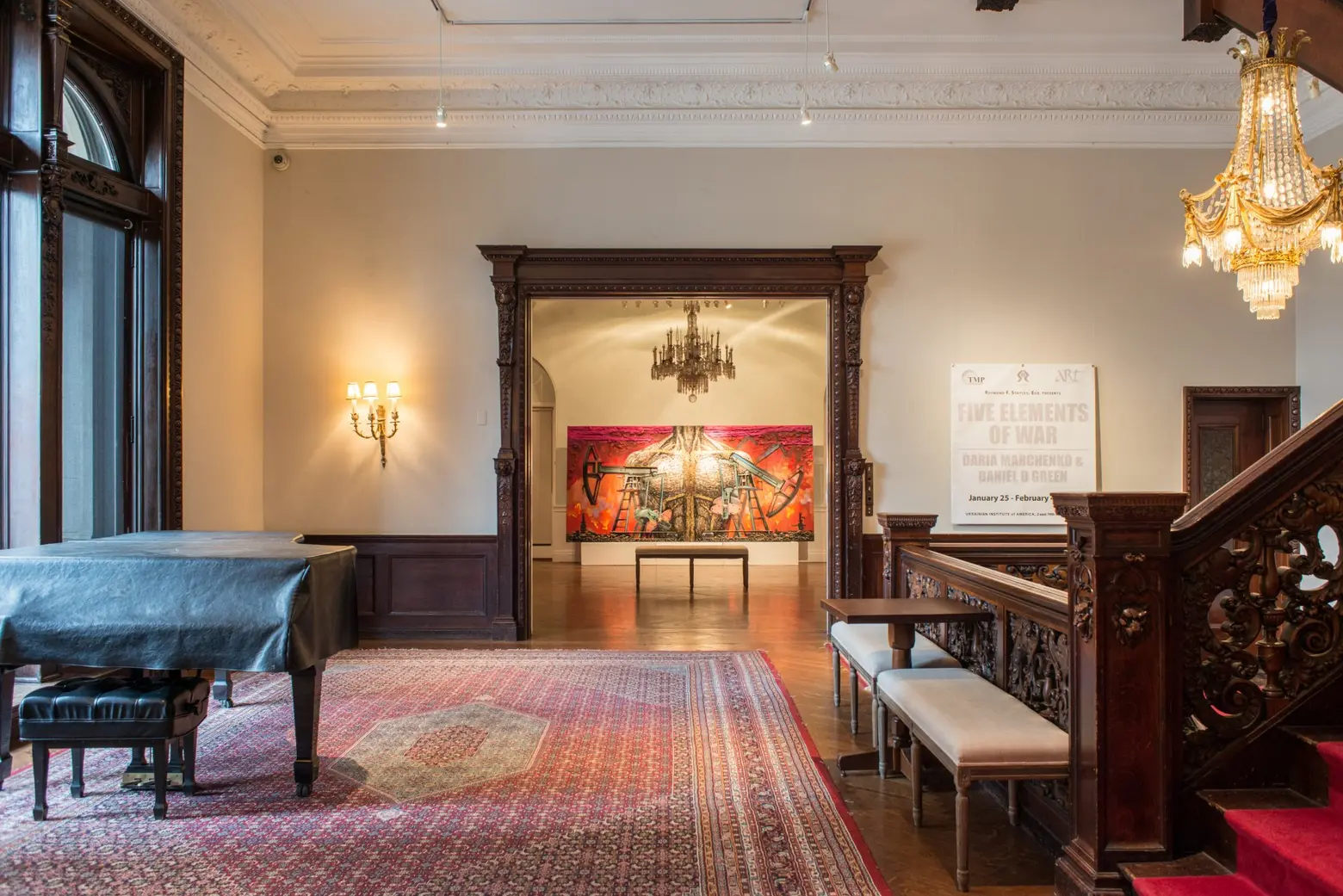
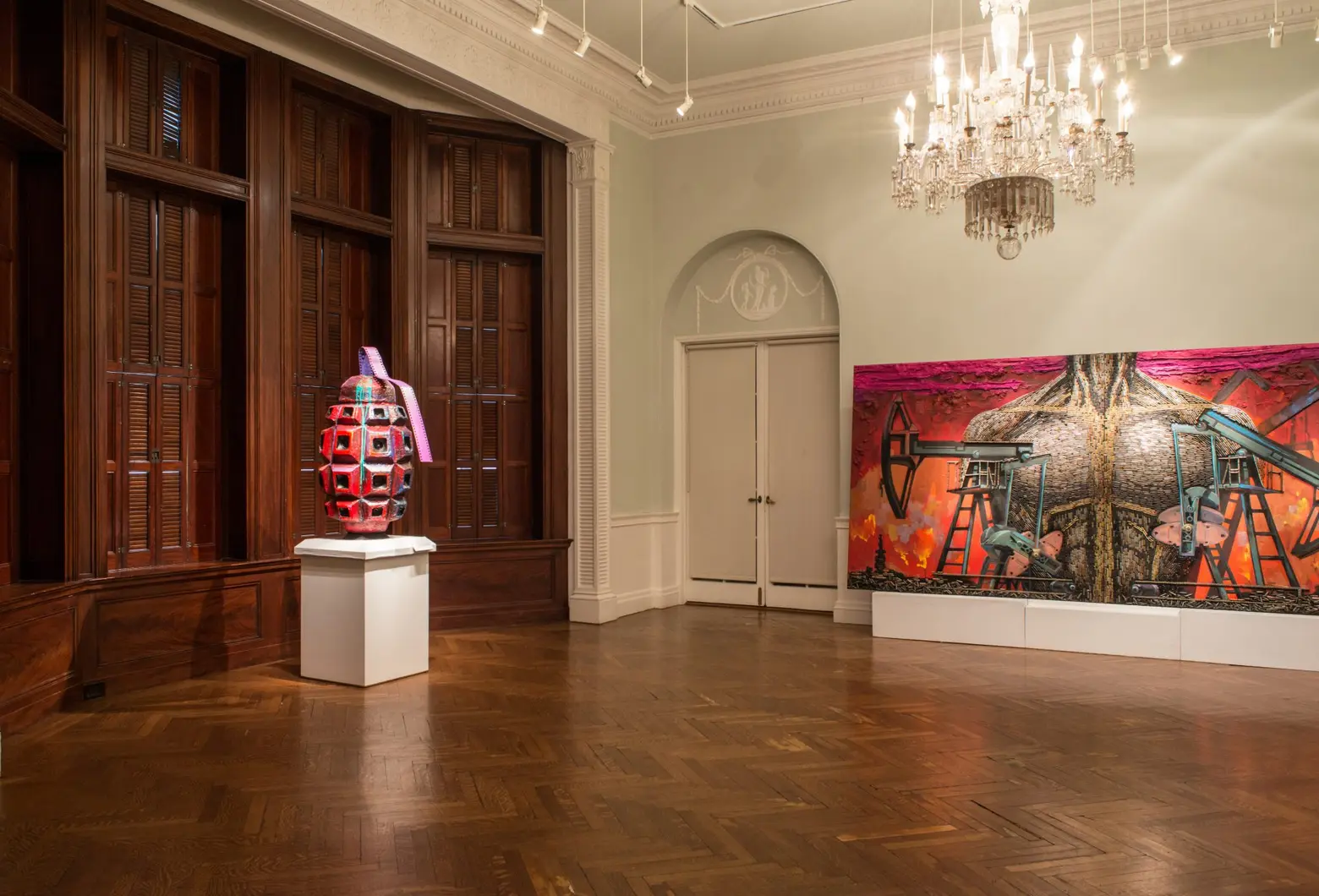
While Sinclair returned to his 79th Street home after a stint in jail, he soon sold the mansion in 1930. Direct descendants of Peter Stuyvesant, Augustus and Anne van Horne, bought the home from Sinclair. In 1954, Augustus’ executor, following his death, sold the property to a group of investors in 1954, who then sold it to the Ukrainian Institute the following year.
Originally founded in 1948 by inventor William Dzus, the Ukrainian Institute of America got its start in West Islip, Long Island. The Institute later moved to the historic building on East 79th Street in 1955, its current home.
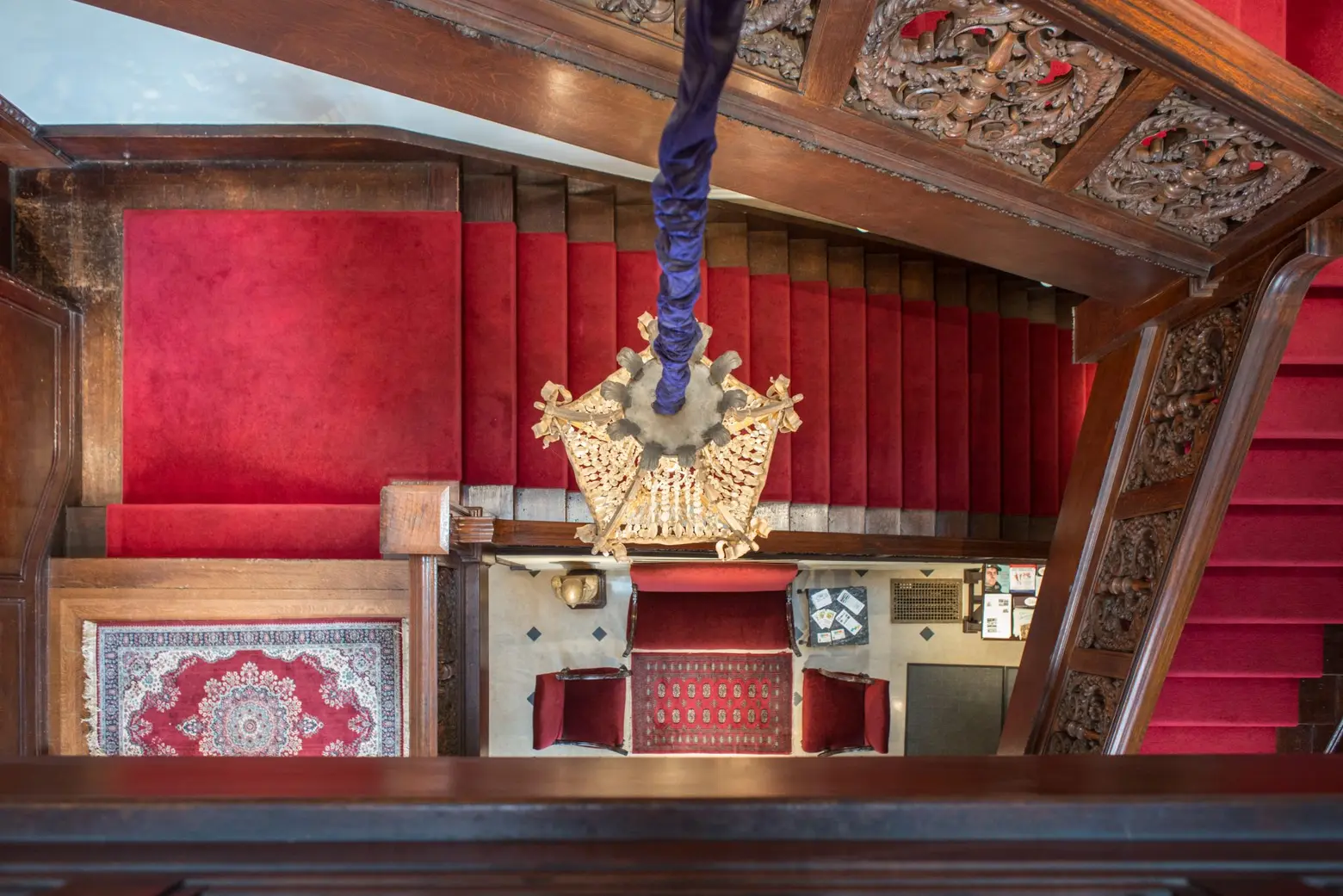
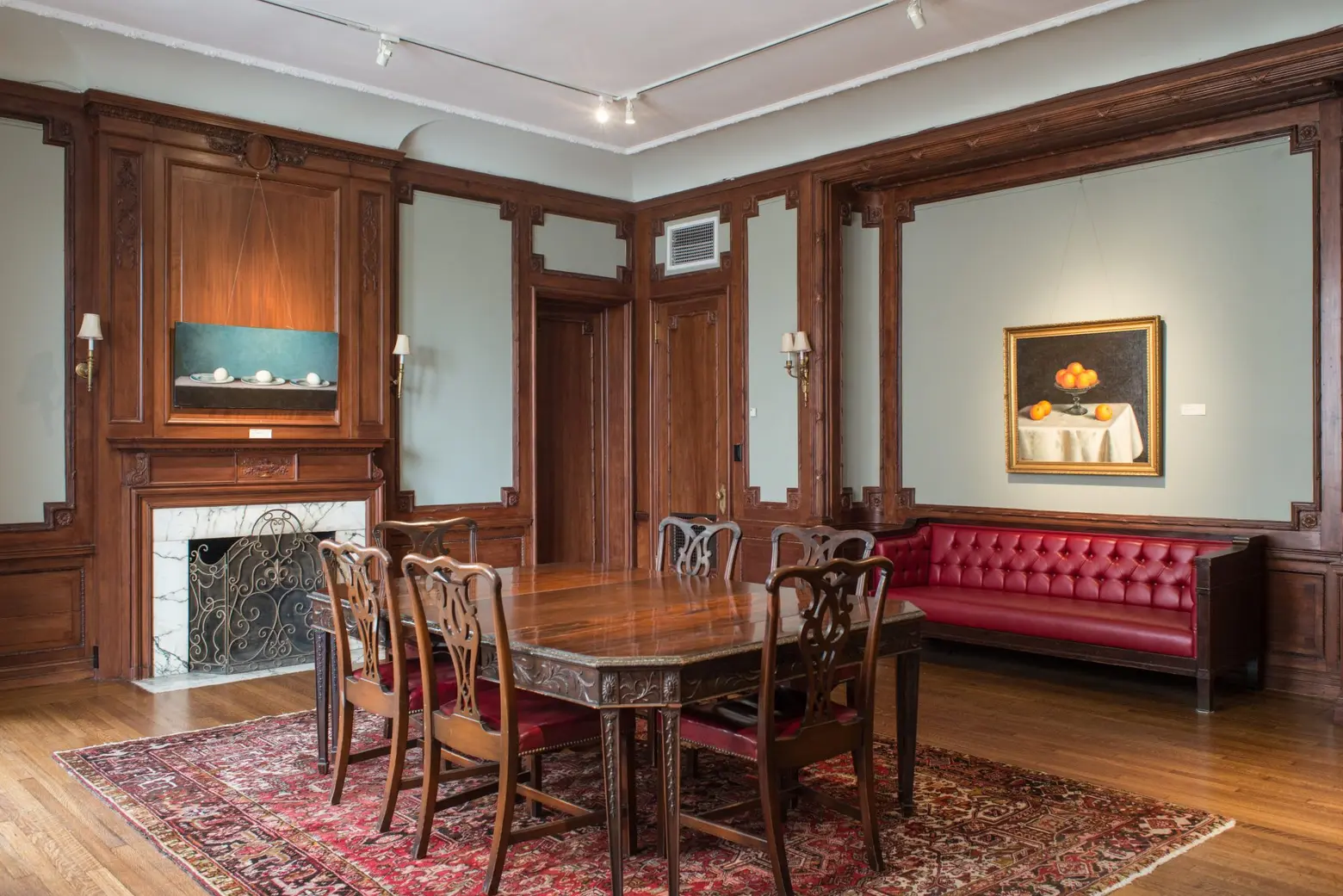
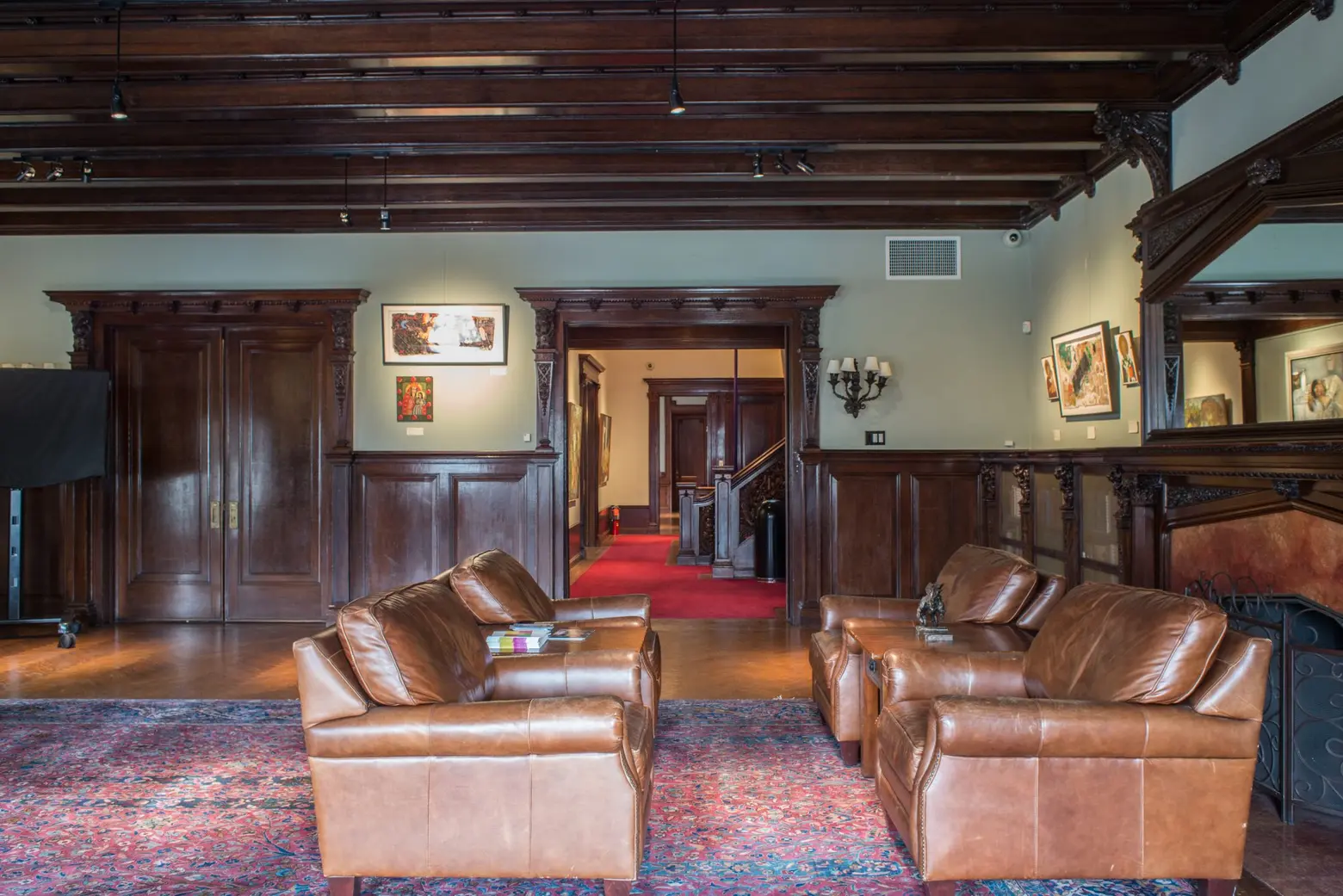
The Museum Mile mansion, which sits in the city’s Fifth Avenue Historic District and the Metropolitan Museum Historic District, was designated as a National Historic Landmark in 1978. The designation from the National Parks Service cites the north-facing home’s “slate-shingle-covered mansard roof that features both copper and terra cotta decoration” and the main stair’s “carved stone seahorses” as some of the noteworthy design elements.
The property underwent some restorations in the late 1990s, under the Institute’s direction. In an article in the New York Times in 1996, the institute’s architect, Joesph Levine, told the newspaper that 25 percent of the slate would be removed and leaks repaired, as part of a $250,000 project.
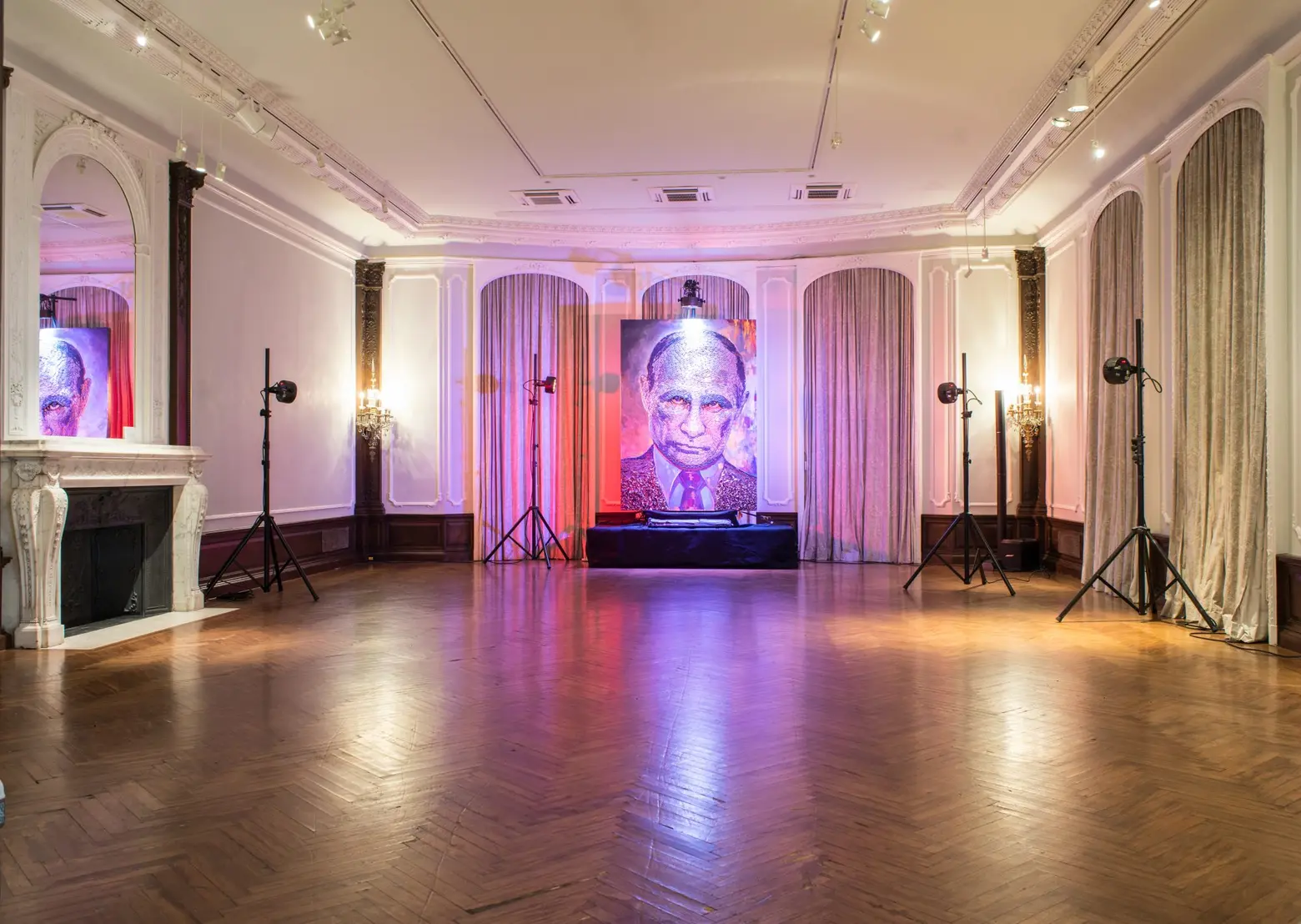
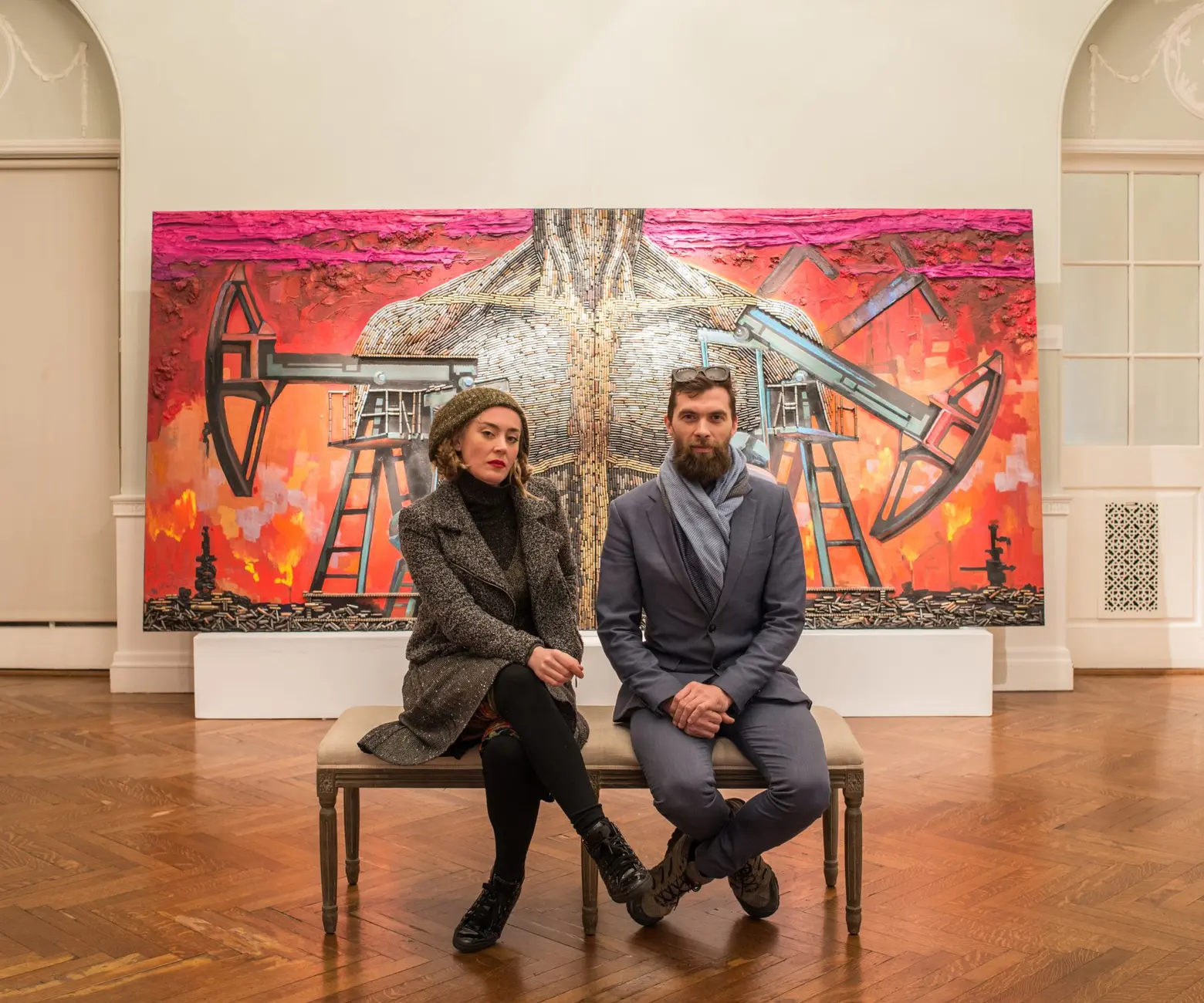
Artist-Activists Daria Marchenko and Daniel Green in front of their artwork
The institute’s last installation included a massive portrait of Russian President Vladimir Putin, made with 5,000 bullet shells from the Eastern Ukraine war. The five-artwork installation, titled Five Elements of War, was designed by Ukrainian artist-activists Daria Marchenko and Daniel Green and displayed last winter.
“Art sometimes has more power than wars and can provoke long lasting changes,” the artists said. “We felt that we could not explore what is happening in Ukraine with just paint so we decided to turn ammunition into art. Bullets and debris of weapons are what is left behind after people are killed and are used to represent the lives of the people lost in this war.”
RELATED:
- How the Fletcher-Sinclair Mansion Went from Private Home to the Ukrainian Institute of America
- Gilded-Age Riverside Drive Mansion With Basement Pool Returns to the Market for $20M
- C.P.H. Gilbert-Designed Park Slope Brownstone Retains All of Its Historic Splendor
All photos taken by Trel Brock exclusively for 6sqft. Photos are not to be reproduced without written permission from 6sqft.
